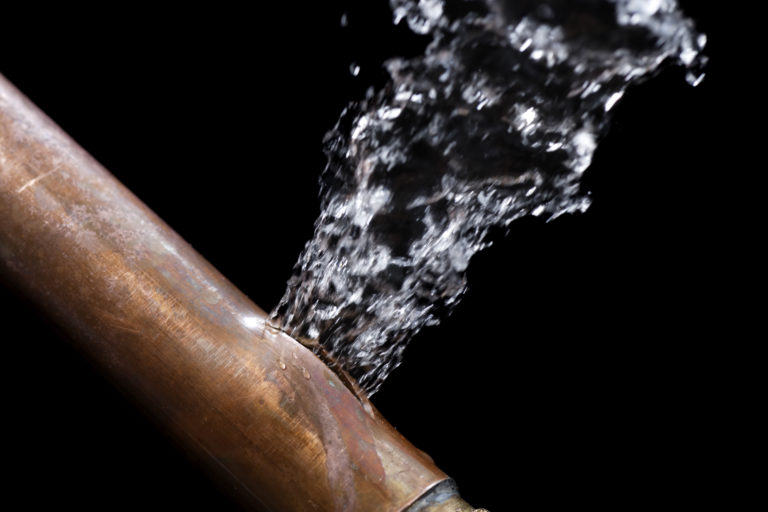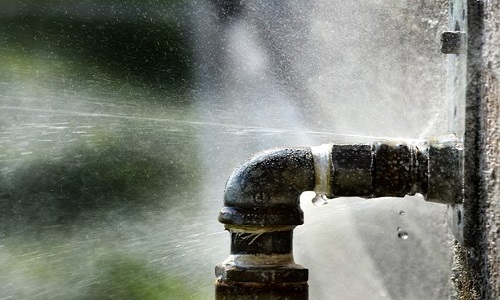Easy Advice for Septic Tank Maintenance: Everything You Need to Know
Easy Advice for Septic Tank Maintenance: Everything You Need to Know
Blog Article
Right here below yow will discover a bunch of sensible content in regards to Do’s And Don’ts For Homeowners Managing With Water Damage.

What should you do if a water pipe ruptureds in your residence, producing a mini-waterfall and swamping an area of your home? The longer you wait, the a lot more serious the water damages in your residential property. For these reasons, you require to discover what to in case of a ruptured water pipe.
Shut down the Main Waterline Shutoff
The first thing you need to do is close the shut-off shutoff. Search for the neighborhood shut-off shutoff to turn-off water in one specific location only. If you do not understand where the local shut-off valve to the component is, you have to turn-off the major waterline valve. This will remove the water in your whole residence. Typically, the major valve is located outside the house alongside the water meter. If it's not there, you can likewise locate it in the basement at an eye-level or maybe in the 1st flooring on the ground. Normally, contractors however the shut-off valve in the main ground degree bathroom or best alongside it.
Call Water Damage Reconstruction Pros for Help
After closing the water source, call the pros for assistance. With their expert help, you can mitigate exacerbation due to the fact that water can permeate via your points resulting in distorted baseboards, loose tiles, or damages framework.
Paper the Damage For Insurance coverage
As you are waiting for the pros to arrive, record the damages triggered by the errant pipe. Take images and also video clips of whatever. Do closeup shots of valuables. These things will certainly work as evidence for your homeowner's insurance policy. Remaining positive with this allows you to file a claim for insurance coverage, which will certainly help you and also your family members return on your feet.
Restore Things That Can Be Conserved
As soon as you're done taking photos, peruse the things as well as get the most vital ones from the stack. Dry them off and attempt to protect as much as you can. Drag them far from wetness so they can begin to dry.
Start the Drying Refine
While waiting for the pros, you can begin the drying out process. The good news is, water from your waterlines are clean so you do not have to fret about sewer water. Nonetheless, the flowing water might have disturbed the dirt and debris in your carpetings as well as floorboards. So be prepared with handwear covers as you use containers to unload out the water. Blot out as a lot as you can with old towels. You can also switch on an electrical fan or open windows to advertise air blood circulation. This will speed up drying out and prevent mold and mildew and mildew growth.
Professionals are the only ones certified to deal with the burs pipelines and subsequent damage. As well as keep in mind, pipelines do not simply suddenly burst. You will typically see red flags like bubbling paint, odd sounds in the plumbing, stuffy smell, caving ceiling, peeling off wallpaper, or water discolorations. Pay attention to these things, so you can nip any issues in the bud.
What should you do if a water pipe bursts in your house, creating a mini-waterfall and flooding an area of your home? For these factors, you require to discover what to in instance of a ruptured water pipeline. After closing the water source, call the pros for assistance. With their expert help, you can mitigate exacerbation due to the fact that water can permeate via your points resulting in distorted baseboards, loose tiles, or damages framework. Luckily, water from your waterlines are tidy so you don't have to worry about sewage system water.
BROKEN WATER PIPES: COST TO REPLACE & WAYS TO FIX A PIPE
CAUSES OF A BROKEN WATER PIPE
A water pipe can break for several reasons depending on the environment you live in, type of pipe, and circumstances.
The most common cause of broken pipes is freezing. If you live in a colder climate, this could happen. When water freezes it increases in volume by 9% and the pressure in the pipes can go from 40 psi to 40,000 psi. Clearly, this could be detrimental to the pipes. Water freezing causes quick expansion, which puts stress on the pipes and could lead them to crack or weaken. When water thaws, it will leak out the cracks. Other changes in water pressure can also cause breakage. Another common cause of broken water pipes is age.
Depending on the material, water pipes can last anywhere from 70-100 years. But the older they get, the more susceptible they are to weakening and corroding. Older pipes coming into contact with another material could speed up the corrosion process as well. PVC pipes can become brittle with age, while copper is prone to corrosion and stress over time. Something that could also potentially break water pipes is when they move. They may move from construction or the house settling. Moving can stress the fixed pipe which may lead to a leak or burst pipe.
HOW MUCH WATER COULD LEAK INTO YOUR HOUSE FROM A BROKEN PIPE?
The amount of water that leaks depend on how big the break in a pipe is. If it is just a minor crack, water will slowly leak out. This isn’t as serious as a full broken pipe, but it can still cause significant damage to your home. Burst pipes can leak up to 10 gallons of water per minute. The amount of water leaked also depends on what appliance is involved. The water line to your refrigerator can leak ½ to 1 gallon per minute depending on water pressure. One toilet supply line may leak 2-3 gallons a minute and a washing machine hose will leak up to 10-12 gallons per minute.
TURN THE WATER OFF
Doing this first is imperative; everything else can wait. You need to deactivate the water supply to stop the flow of water and prevent more water from leaking into your home. Shutting off the water could potentially save you thousands in water damage repairs. Locating the water shutoff valve depends on the climate you live in. For colder climates, the valves are usually inside, such as in the basement. For houses in milder weather, the shutoff valves will probably be outside—either attached to an exterior wall or in an underground box with a removable lid.
OPEN A FAUCET
The next thing to do is to open a faucet or turn on a sink. This will relieve any remaining water pressure in the pipes and ensure a full-shut down.
GET RID OF THE WATER
The quicker you get rid of the water, the less water damage and mold there could be. Use a mop and a shop vacuum to help get clean up the water. Use towels to dry everything the best you can.
CUT AND REMOVE THE DAMAGED PIPE
Once you have shut off the water and drained the damaged water pipe, you can begin to fix the issue. Cut out the damaged section of the pipe with a pipe cutter, ensuring that you also cut one inch extra on each side of the damage. Once you get rid of the broken part of the pipe, you may begin repairs.
https://www.wmhendersoninc.com/blog/broken-water-pipes-cost-to-replace-ways-to-fix-a-pipe/

We were shown that article on Do’s And Don’ts For Homeowners Managing With Water Damage through someone on another web property. Are you aware of someone else who is inquisitive about the topic? Feel free to share it. We appreciate reading our article about The Do’s And Don’ts When Water Floods Your Home.
Report this page